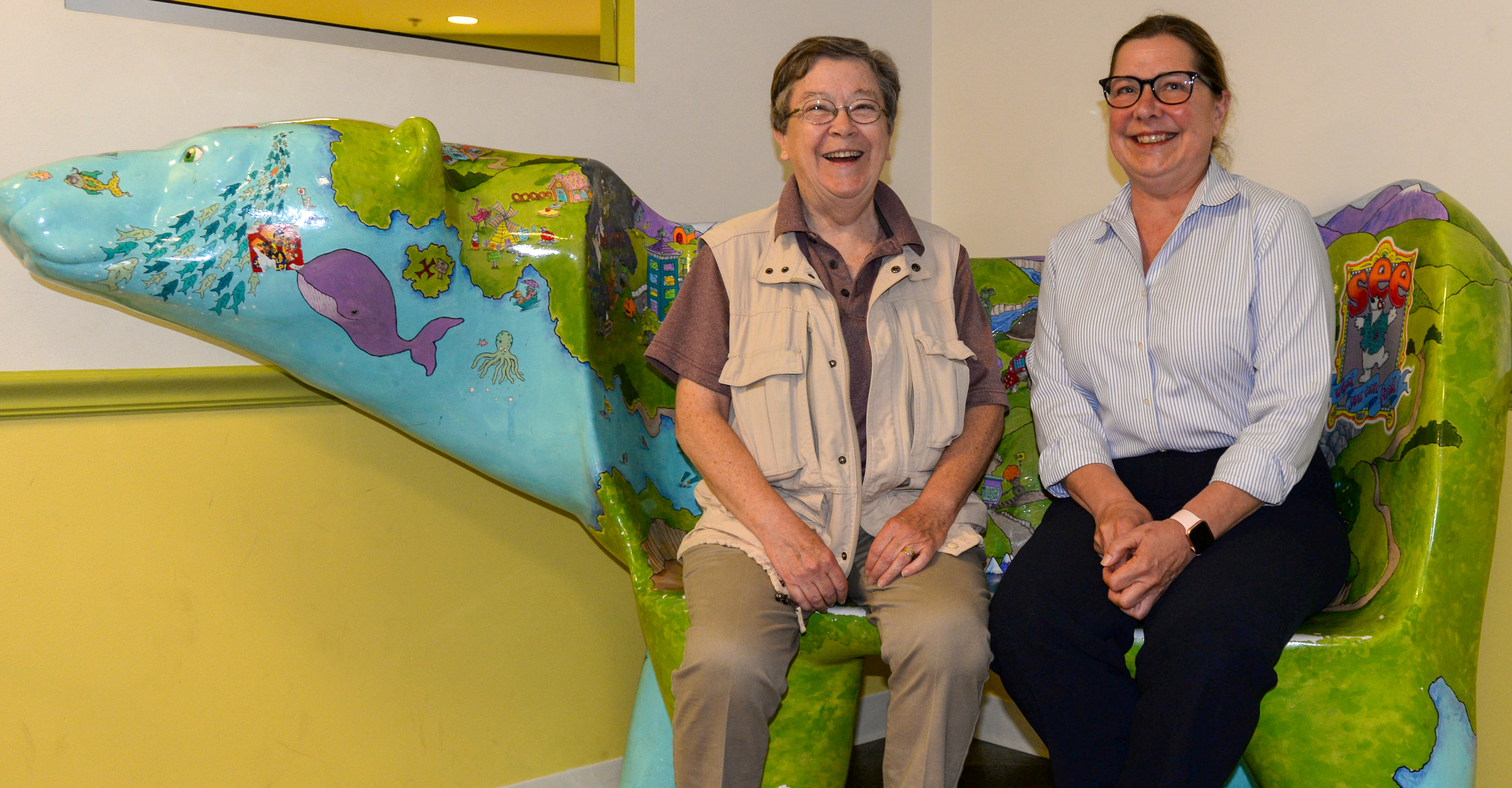It was back in the early ‘80s when the Pennsylvania College of Optometry (PCO) was a single purpose institution and The Eye Institute (TEI) was still shiny and new having opened in the late ‘70s - Cathie Muhr and Mary Jameson made their way to Philadelphia. A graduate of the Southern California College of Optometry (SCCO) optometric program in 1975, Muhr was hired in 1981 as a technician after a national search. She then met Jameson, originally from Indiana who was still in school at the time, at the annual American Optometric Association meeting the following year. The rest, as they say, is history with a combined 65 years of service to their professions, PCO, Salus University and TEI.
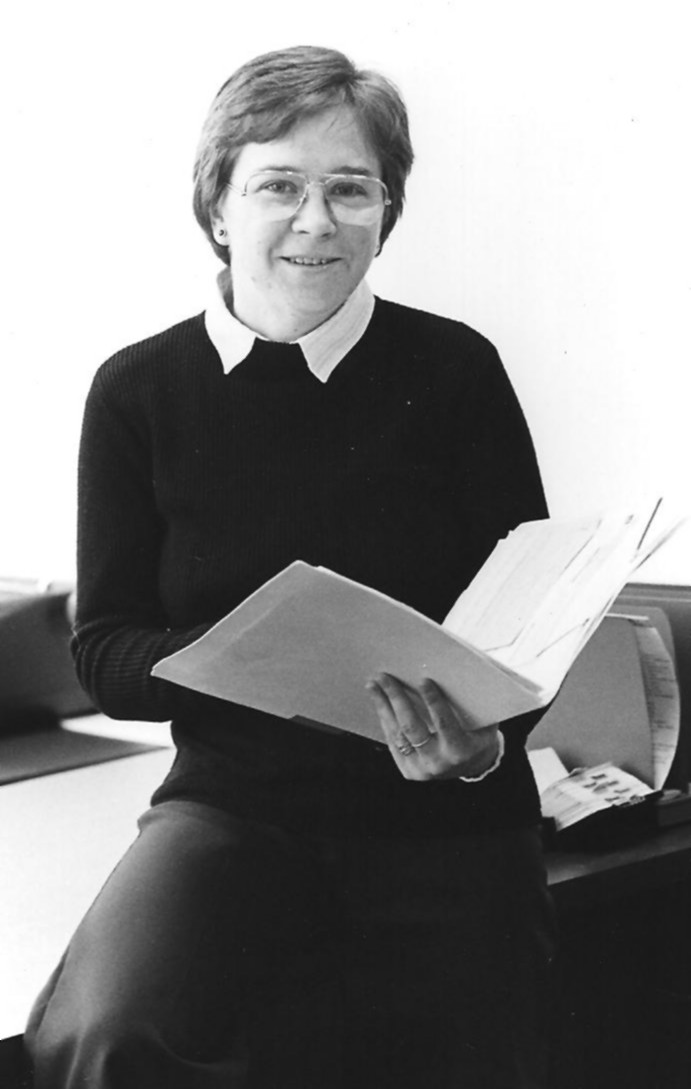 Shortly after she was hired, Dr. Anthony DiStefano included Muhr in plans to start an optometric technician program. At the time, talks were already happening with both the Community College of Philadelphia and Manor Junior College. “After a year of planning and recruiting, the technician program started – we went to Manor Junior College,” Muhr said. “We had a combined two-year program where they [students] did some of the coursework at Manor and some of their coursework here.”
Shortly after she was hired, Dr. Anthony DiStefano included Muhr in plans to start an optometric technician program. At the time, talks were already happening with both the Community College of Philadelphia and Manor Junior College. “After a year of planning and recruiting, the technician program started – we went to Manor Junior College,” Muhr said. “We had a combined two-year program where they [students] did some of the coursework at Manor and some of their coursework here.”
Jameson initially had approached Muhr just as the program was launching and along with friend Judy Berges, who happened to be a fellow student of Jameson’s in their technician program at Indiana University, were hired. The trio developed, ran and taught PCO’s technician program, while dually working in the primary care modules at TEI for five or six years.
Jameson and Berges became the anchor technicians in TEI. Jameson worked with Dr. Joel Silbert – who conducted her original hiring phone interview – with an emphasis on contact lens. Whereas, Berges was in charge if the pharmacy at the time and worked with Dr. Jeffrey Nyman. Two years later, technicians who were graduates of the Manor/PCO program were hired for the other modules. Over the course of the program, all of the graduate optometric technicians had two-year degrees and were placed at private practices or other institutions.
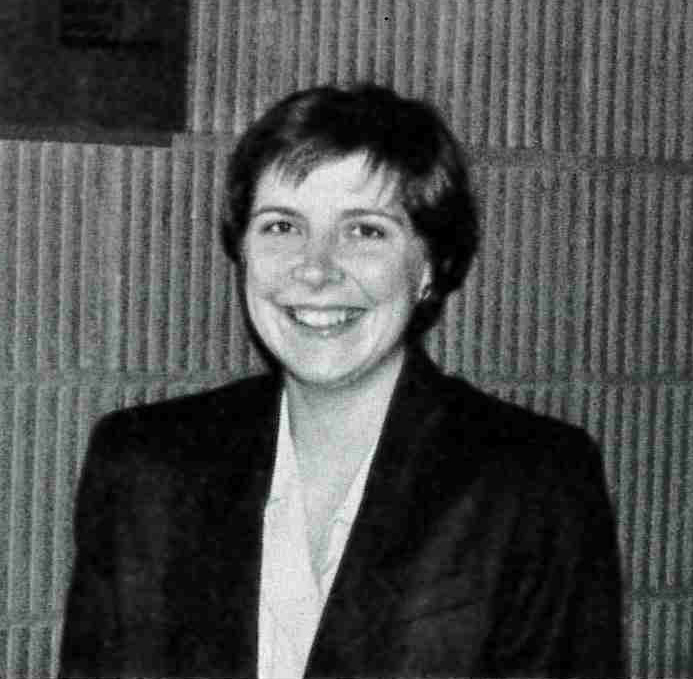 Although optometry as a profession – at the time and to date – has struggled to support the idea of a trained technician, Muhr was positive about the program and its functionality. Prior to the implementation of training programs, optometric assistants were trained in-office and doctors’ practice. “But our graduates could come in and do anything, those who hired them really appreciated it,” she said. “I think it was a successful program.”
Although optometry as a profession – at the time and to date – has struggled to support the idea of a trained technician, Muhr was positive about the program and its functionality. Prior to the implementation of training programs, optometric assistants were trained in-office and doctors’ practice. “But our graduates could come in and do anything, those who hired them really appreciated it,” she said. “I think it was a successful program.”
Unfortunately, technician programs started dwindling and what once was 18 fruitful programs are now only four or five with modifications. In fact, in 2017, Salus and the Community College of Philadelphia once again partnered to bring an innovative Ophthalmic Technician Proficiency Certificate Program to Philadelphia, which is comprised of a two-semester, full-time program that included two clinical internships, of which Jameson also helped implement.
A Dual Journey
To hear Jameson talk about how she arrived in Philadelphia is an adventure, from the time she told her dad she was offered a job in Pennsylvania, to packing fairly quickly and driving east from rural Indiana; she left the following day, stayed with friends along the way and then with Muhr when she arrived in the city, started at PCO that Monday and has been here ever since. The two were not only building the program but also a workflow for the technicians in the suites, performing clinical skills, teaching contact lens dispensing and optical courses, and conducting pre-exams, which then evolved into visual fields. Over time, they created centralized methods within TEI. And, Jameson soon switched over to supervising the clinical skills lab and then back to TEI.
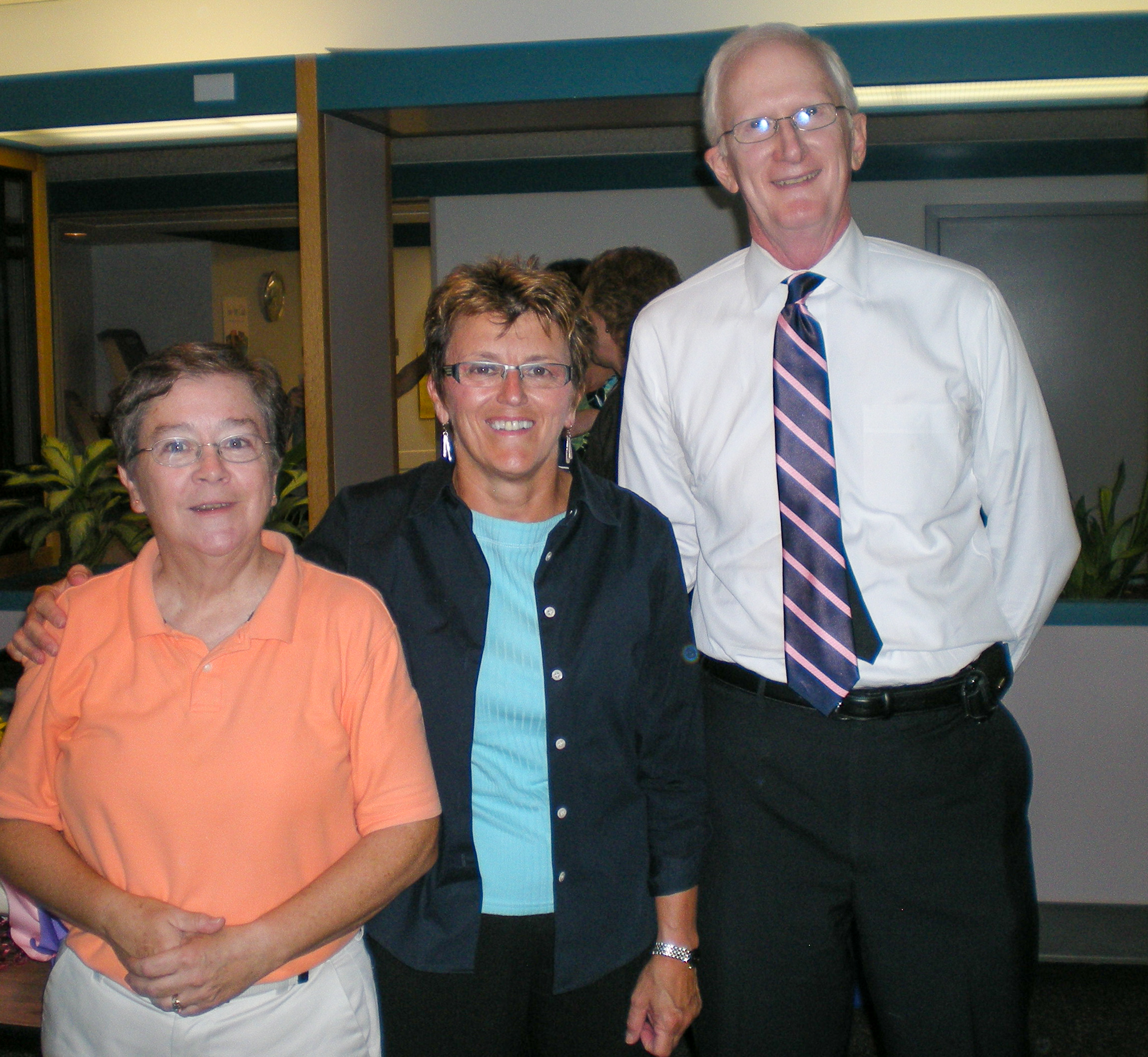 Only a year into her tenure at TEI, Muhr – a third-generation optometric professional - took on additional responsibilities. “They needed somebody to do student scheduling,” she said. “And I said, I can do this, and do it easier than what’s been happening, so they allowed me to show them what I could do.” Her position evolved along the way, as it often does, to include scheduling for faculty, academic calendars, nights and weekend schedules at TEI, and more.
Only a year into her tenure at TEI, Muhr – a third-generation optometric professional - took on additional responsibilities. “They needed somebody to do student scheduling,” she said. “And I said, I can do this, and do it easier than what’s been happening, so they allowed me to show them what I could do.” Her position evolved along the way, as it often does, to include scheduling for faculty, academic calendars, nights and weekend schedules at TEI, and more.
Over the course of more than 25 years, both positions transformed and Jameson’s roles increased as time went on. With a bachelor of health science education under her belt, she was handling everything from taking photos, automated testing, overseeing students, and seeing patients, until she started managing specialty services. Once TEI underwent a multi-million dollar renovation in the mid-‘00s, she added even more skills to her repertoire. “The definition of a technician is that they can do anything that comes down the pike,” Muhr said. “Mary is the embodiment of that. Whatever needs to be done.”
Muhr was instrumental in developing a series of presentations for optometric technicians and designed and developed the slides and scripts for topics ranging from Pre-Testing to Ophthalmic Optics and more. Both women lectured nationally and internationally for their profession, both were also active nationally and rose to chairs in the American Optometric Association Paraoptometric Section. And, although Muhr officially retired in 2010, Susan Oleszewski, OD ’76, MA, convinced her to come back and participate in the development of the Norristown Looking Out for Kids vision care initiative, which piloted in the 2012-2013 academic year and has been running ever since.
But, no matter what the job or task was at hand, both women were long stays because of the people they worked with – doctors, staff, residents and students alike – with the College and University’s mission being at the core.
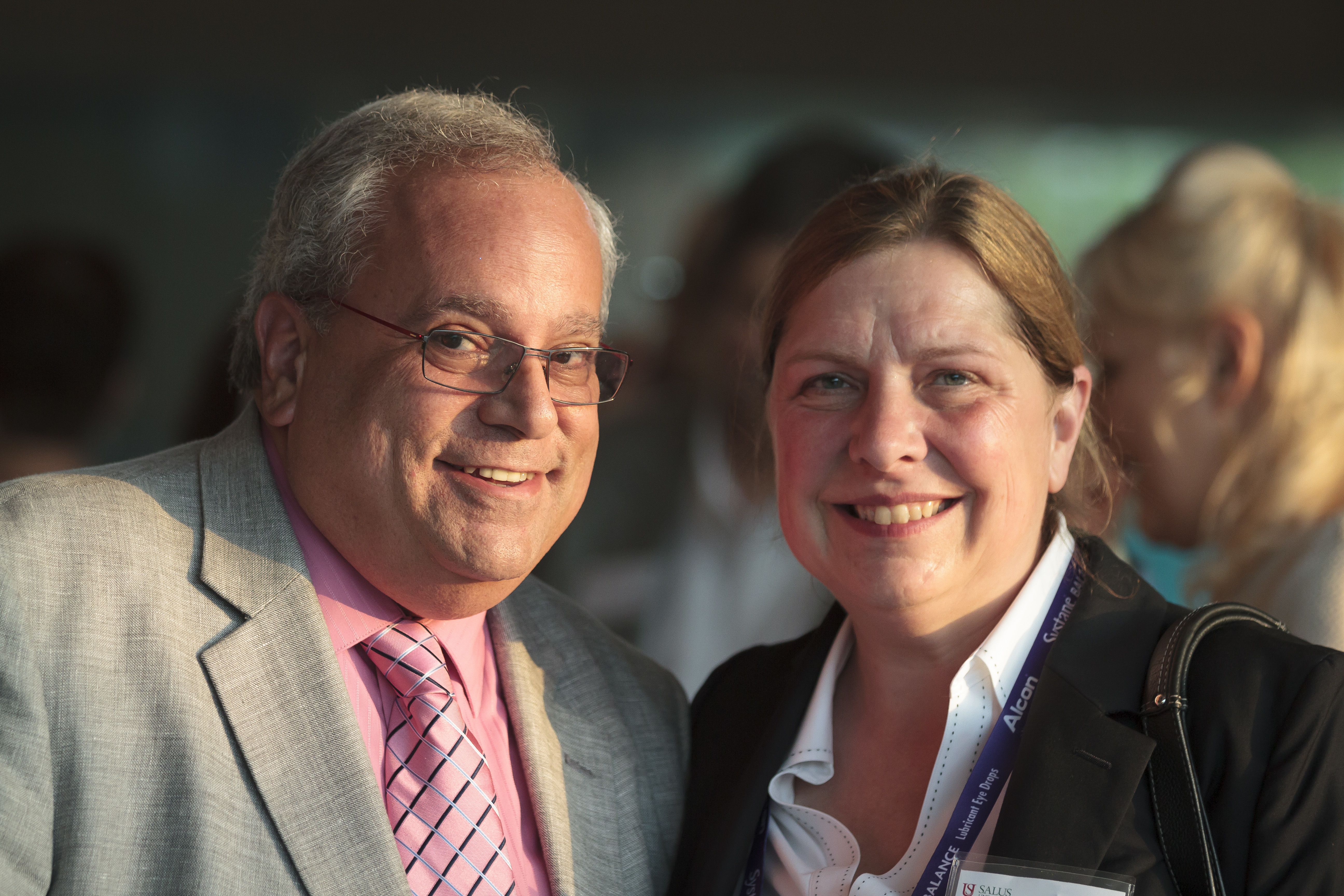 “There have been wonderful doctors, residents, students, front desk and administrative support people that have just been great and being able to know that you’re serving them,” Muhr said. “In my mind, I worked for the students or the residents. They are the ones who chose to come here to get their education. I always wanted to try to do the best I could for them. In order to do that, obviously we had to have all the faculty in place, courses in place, and we had to have the calendar in place, all those things. Everything I did interconnected. The main thing was serving the interns and the faculty, some really wonderful people.”
“There have been wonderful doctors, residents, students, front desk and administrative support people that have just been great and being able to know that you’re serving them,” Muhr said. “In my mind, I worked for the students or the residents. They are the ones who chose to come here to get their education. I always wanted to try to do the best I could for them. In order to do that, obviously we had to have all the faculty in place, courses in place, and we had to have the calendar in place, all those things. Everything I did interconnected. The main thing was serving the interns and the faculty, some really wonderful people.”
Jameson agreed, highlighting when everyone was on the same campus, prior to the University’s move to Elkins Park, that everyone knew each other, but also noted the final outcome or the “aha” moment was something she really relished from the student perspective.
“But to expand on it with the interns, one of the things I really enjoyed seeing was when I was in the lab. When they first held a piece of equipment and they had it backward. They would be looking through and they would be on the patient’s side, and it was the first time they had it. How do you make the chair go up? How do you make the chair go down? And with the slit lamp and they’re going real slow. Being able to give them a little confidence, ’A lot of people start out this way.’ And in six months, you’re going to be doing it like nothing. You’re not going to think about it anymore, and to watch that come into fruition for them. That was really, really special for me,” she said.
